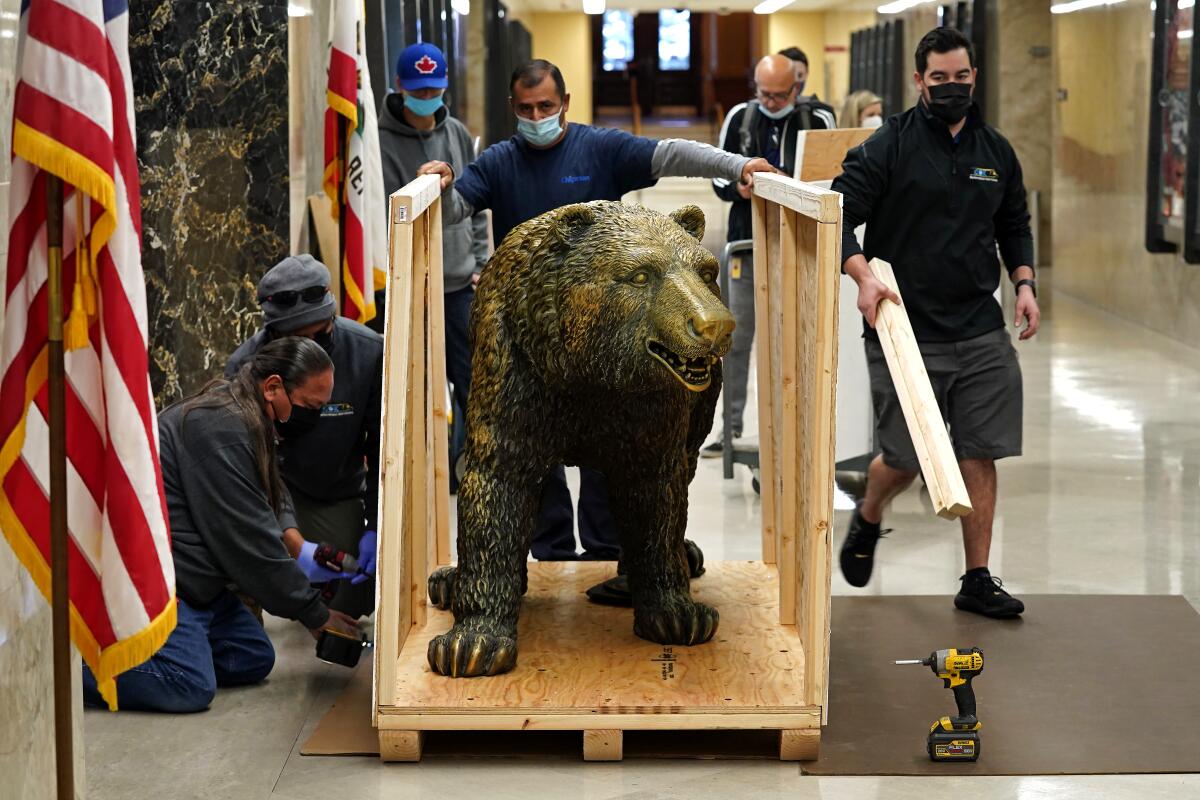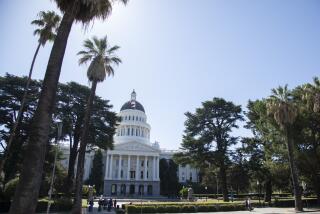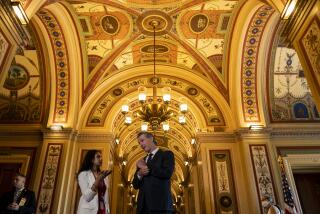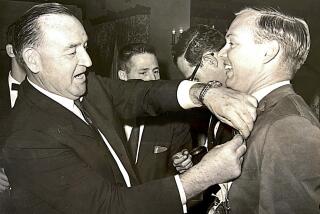Opinion: Looming demolition at the state Capitol reminds of how things changed in the pandemic

Nothing felt terribly unusual when, on the morning of March 12, 2020, Gov. Gavin Newsom called a news conference to discuss the state’s response to the novel coronavirus that had begun spreading around the world and into our collective consciousness. Since the 1960s, governors have invited reporters to cover the news in that Capitol briefing room packed with narrow white desks and yellow fiberglass chairs. This day seemed no different.
But as I walked in to take my seat that day, I saw signs that life was starting to change: Two-thirds of the chairs were blocked off with signs saying “Practice Social Distancing: Do Not Sit.”
I had no idea, of course, just how much more everything would change; nor did anyone know that this would turn out to be the last time Newsom held a news conference in that room, where eight California governors have presented budgets, celebrated the passage of new laws and answered (or dodged) reporters’ questions. But as remote work became the new norm during the pandemic, state officials moved ahead with preparations for a long-standing plan to demolish half the Capitol. The wing that holds that press briefing room will soon become a construction site.
It feels like a physical reminder of a thought that’s recurred throughout the pandemic: Some things will never go back to the way they used to be. And it’s had me reflecting on how much the pandemic has heightened my appreciation for the places that bring people together. The state Capitol, in normal times, is a buzzing cauldron of activity. Politicians rush between meetings. Lobbyists swarm hallways hoping to get a word with a key lawmaker. Tourists snap photos with the giant bear sculpture in front of the governor’s office. Protesters chant and wave signs.
So much of that vanished during the pandemic. And now the place where it happened is going away too.
The wing slated to be razed — known as the annex — is a boxy midcentury behemoth that was added on to the back of the historic dome 70 years ago. Six stories tall, it houses offices of the governor, lieutenant governor and 115 of the 120 lawmakers; the others have offices in the historic wing. It’s where Gov. Arnold Schwarzenegger famously erected a smoking tent for politicians to puff cigars and cut deals. And where Gov. Jerry Brown reviewed legislation with his pet corgis at his feet. Newsom installed a children’s playhouse here to make it easier for his aides to bring their kids to work.
In the 1960s, the Los Angeles Times reported, Gov. Pat Brown held informal press conferences in his office in the annex, and “sometimes put his feet up on the desk” while chatting with newspaper reporters. (“Newspapermen,” the article called them.) As television became a more prominent medium, the state added the formal press conference room. The beneficiary turned out to be Gov. Ronald Reagan, who attracted loads of TV cameras with his weekly news conferences. “Reagan quickly became a pro in these question-and-answer sessions,” The Times reported in 1967. “His previous movie and television training undoubtedly helped to a great extent in this regard.”
But the annex was added on to the historic wing in a bizarre way. Mismatched floors mean the third floor of the annex lines up with the second floor of the historic wing. The second floor of the annex comes to a dead-end that floats midair beneath the historic rotunda. On the day in 1951 when lawmakers first toured the new wing, The Times described a senator getting lost in the confounding maze: “The new structure’s six floors are tied in with the four floors of the old building and it brings enough confusion for people to lose their way.”
Because the building lacks modern safety features and has areas that are not accessible to people with disabilities, lawmakers decided several years ago to replace it with a new structure that can better accommodate crowds. The historic west wing — built in 1874 and updated in 1982 — will remain intact, leaving the ornate Senate and Assembly chambers untouched.
In recent weeks, Capitol staffers have been packing boxes to move to a temporary office a block away. Soon, the annex will close to the public and workers will begin removing asbestos. Demolition could begin in the spring, if lawsuits challenging the project are resolved. Plans call for the new wing to be completed in four years at a cost of $1.2 billion.
“The system of our government does rely on people coming together,” Assemblyman Ken Cooley (D-Rancho Cordova) told me last week, as he led reporters on a tour of the annex. “People need to have conversations, and remote work doesn’t really facilitate that.”
Cooley has been working in the Capitol since he was an aide in the 1970s. He’ll be termed out of office by the time anyone can move into the new building. A new crop of lawmakers will move in. Things are changing at the Capitol. But really, that’s the way it’s always been.
More to Read
A cure for the common opinion
Get thought-provoking perspectives with our weekly newsletter.
You may occasionally receive promotional content from the Los Angeles Times.











